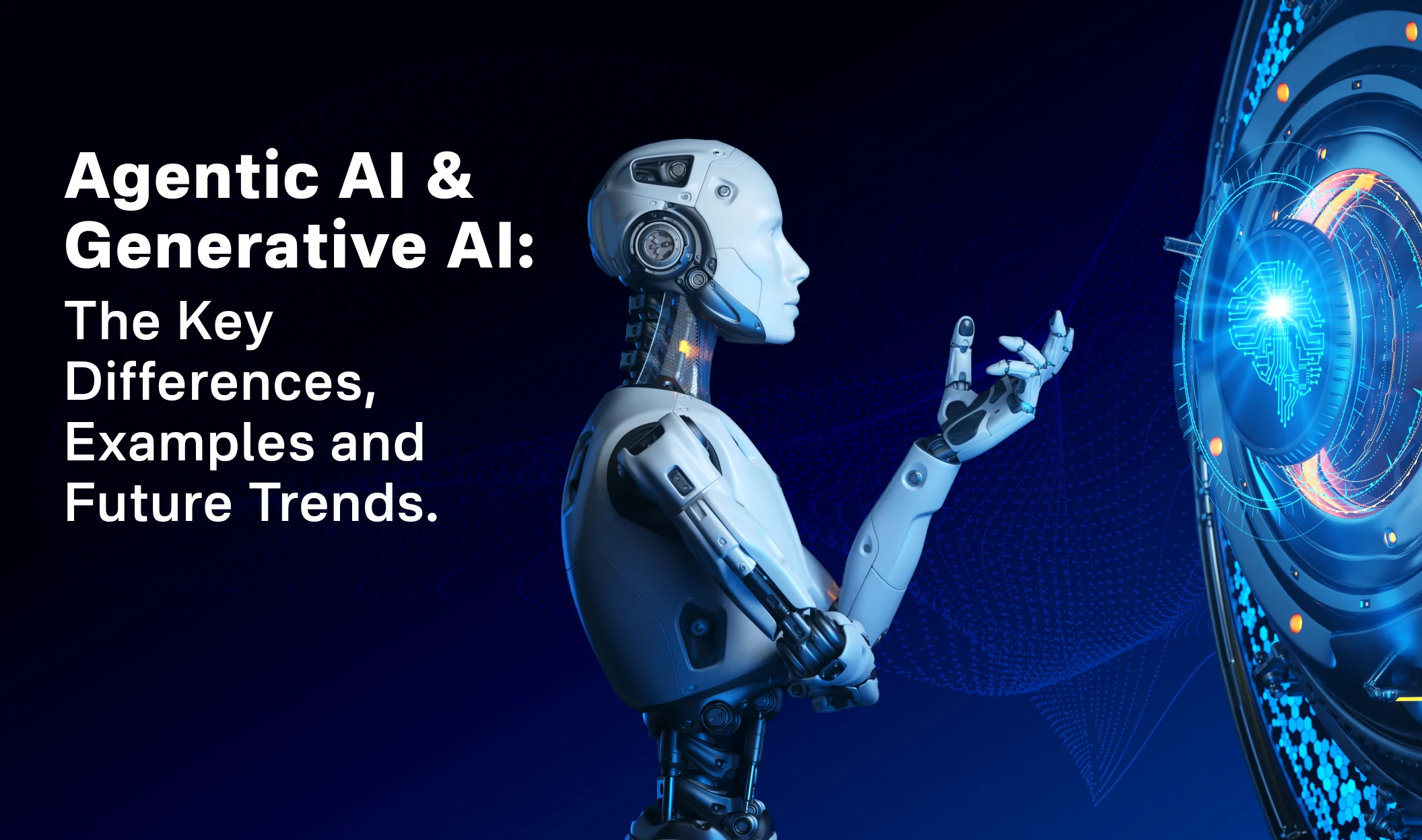If you’ve spent any time in the AI space lately, you’ve probably come across these buzzwords-Agentic AI and Generative AI- commonly tossed around. What do they actually mean, and how are they different? In today’s AI-driven world, these two technologies are shaping everything from how we create content to how decisions get made without human input.
Generative AI is the creative powerhouse, capable of writing articles, composing music, and designing images out of thin air. Agentic AI, on the other hand, is more like a goal-oriented doer that is capable of planning, reasoning, and acting autonomously to get tasks done.
Both are incredibly powerful, but they serve very different purposes.
In this post, we’ll break down what each type of AI really is, how they work, and where they’re showing up in the real world. Whether you’re a curious tech newbie, a business leader planning your next big move, or just trying to keep up with the AI buzz, this guide will give you a clear understanding of Agentic AI and Generative AI, and why they matter.
What is Agentic AI and How Does It Differ from Generative AI?
At the core of the conversation around Agentic AI and Generative AI is a simple but important distinction: what they’re built to do.
Generative AI is all about creating content. It learns from massive datasets to produce things like text, images, music, or even code. Think of it as a supercharged creative assistant. You give it a prompt, and it generates something new. For example, ChatGPT writes human-like text, and DALL-E turns written descriptions into images. It’s reactive: you ask, it creates.
Agentic AI, on the other hand, is designed to take action. It doesn’t just wait for a prompt; it can plan, decide, and carry out tasks on its own. Its goal is to achieve specific outcomes with minimal human input. It’s like having an intelligent agent that can manage projects, solve problems, and adapt to new information without needing constant instructions.
To sum it up, generative AI creates things while agentic AI gets things done.
Why Is Interest in Agentic AI Growing?
AI adoption is exploding. About 78% of companies are already using some form of AI, and by 2026, Gartner predicts that 80% of organizations will be using Generative AI-powered tools. Platforms like ChatGPT have shown how quickly Generative AI can reshape industries—from marketing to customer service.
But as the technology matures, more businesses are looking for AI that does more than just generate content. That’s where Agentic AI comes in. Its ability to automate multi-step tasks, make decisions, and run complex workflows is a game changer, especially for companies that want to save time, scale operations, or reduce manual work.
Understanding the difference between these two types of AI is crucial. It helps businesses and developers choose the right solution—whether they need help producing content quickly or managing autonomous systems that think and act on their behalf.
How Do Agentic AI and Generative AI Actually Work?
Alright! Imagine you have a big box of crayons and a huge stack of coloring books. You’ve spent lots of time looking at pictures, learning how people draw cats, trees, rockets, and rainbows.
Now, one day someone says, “Can you draw me a dinosaur wearing sunglasses and eating ice cream?”
Because you’ve looked at so many pictures, your brain goes, “Oh! I’ve seen what dinosaurs look like, I know what sunglasses and ice cream are!” So you use what you’ve learned to draw something brand new—even if no one showed you that exact picture before.
That’s kind of how Generative AI works.
It “looks” at tons and tons of examples—pictures, words, songs, whatever—and learns the patterns. Then when you ask it to make something, it doesn’t copy; it creates something new using what it remembers from all those examples.
Now, the adult explanation.
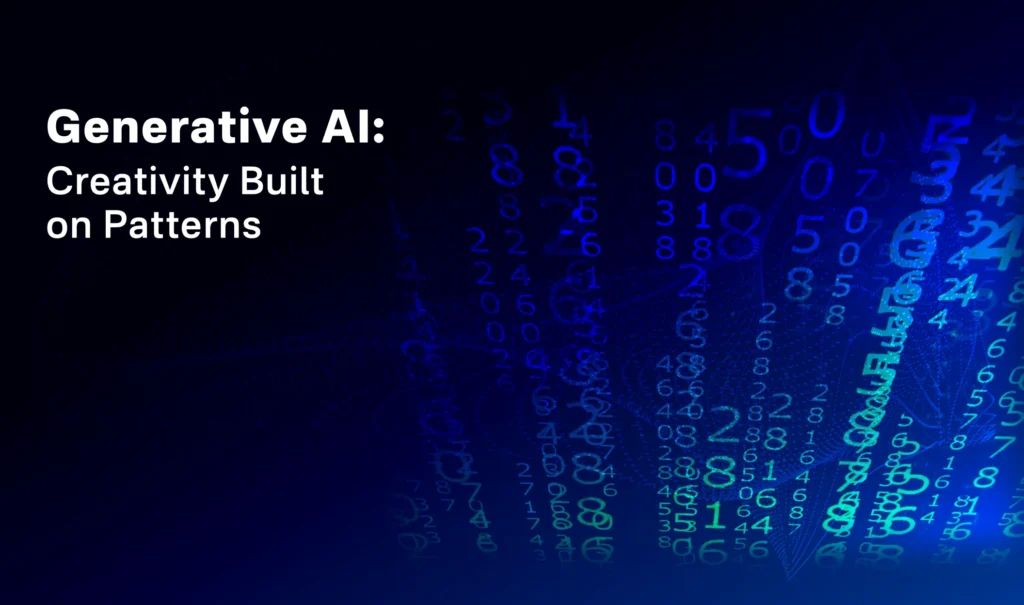
Generative AI runs on powerful models like Generative Adversarial Networks (GANs) and Transformers (e.g., GPT, BERT). These models are trained on massive datasets and learn to spot patterns in language, images, music, code, and more. The result? They can generate brand-new content that looks and sounds convincingly human.
But there’s a catch: Generative AI is reactive. It responds to prompts one at a time and doesn’t remember what it created before unless you explicitly provide context. There’s no awareness, no long-term planning—just output based on input.
Its strength lies in pattern recognition and content creation, which makes it ideal for creative work. But its intelligence is narrow. It can’t make decisions or act on its own.
Now, for Agentic AI.
Okay! Imagine you have a robot friend named Smarty. Smarty doesn’t just wait for you to tell it what to do. It can think, plan, and do things all by itself to help you.
Let’s say you tell Smarty:
“I want to throw a birthday party for my teddy bear.”
Smarty doesn’t just say, “Okay!” and stop. Nope! Smarty starts figuring things out:
- It makes a list: “We need balloons, cake, music, and friends!”
- It checks the kitchen: “We have flour and sugar—I can bake a cake!”
- It goes to your toy box: “Here are the balloons and party hats!”
- It even reminds you: “Let’s invite your stuffed animals!”
And then… it gets everything ready, all on its own!
That’s what Agentic AI does. It’s like a robot helper that doesn’t just wait for instructions. It understands your goal, makes a plan, and takes action step by step to make it happen.
So while generative AI is like an artist or storyteller, agentic AI is like a super helper who thinks and does stuff for you even while you nap.
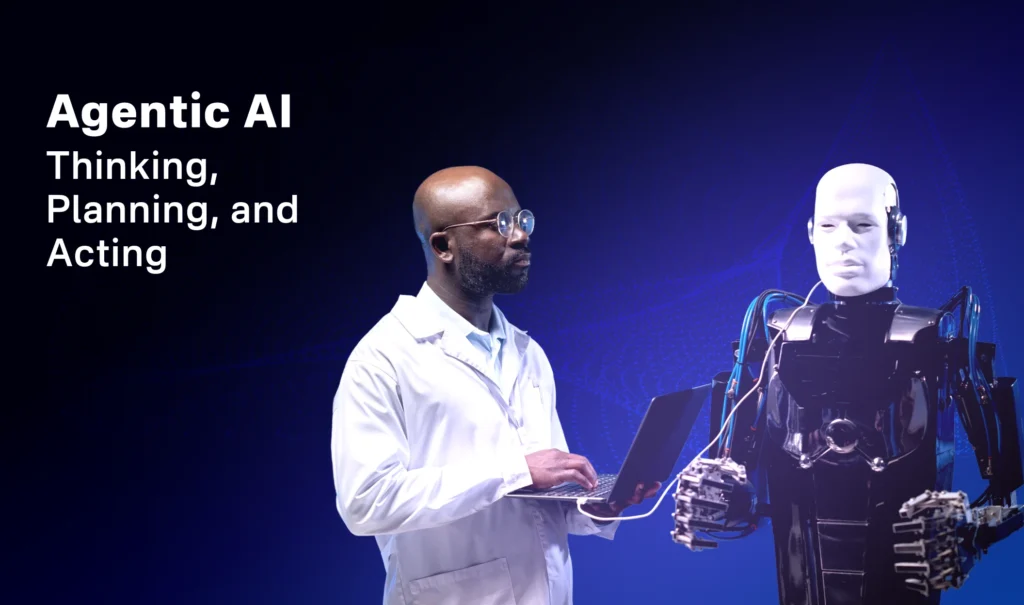
Agentic AI is built for action. It combines several advanced technologies—like reinforcement learning, decision trees, robotics frameworks, and sensor fusion, to engage with the real world and dynamic environments.
Unlike generative AI, agentic AI doesn’t wait for instructions. Once it’s given a goal, it can:
- Learn from feedback
- Plan multi-step strategies
- Adjust its behavior in real-time
- And act independently to get results
This kind of AI can reason, anticipate outcomes, and change course on its own—all without human involvement once the initial parameters are set.
Key Features of Agentic AI
What makes Agentic AI truly stand out? Here are its defining characteristics:
- Autonomous Reasoning
It can break down a goal (e.g., “reduce delivery delays”), analyze variables, and choose the best course of action—all on its own. - Real-Time Adaptability
If something changes—like a traffic jam or a sudden demand spike—it can pivot instantly and adjust its plan. - Multi-Step Task Execution
Agentic AI doesn’t just take a single action. It can manage entire workflows: gathering data, diagnosing problems, deciding on solutions, and putting them into motion. - Collaborative Orchestration
Multiple agentic systems can work together—one handling logistics, another monitoring compliance, another managing communications—all in sync toward a common objective. - Modularity and Scalability
It’s built with modular components, so businesses can scale it up and plug it into other systems as needed. - Continuous Learning
Agentic AI improves over time. It learns from experience and updates its strategies, staying effective in evolving environments.
These traits make agentic AI especially valuable for solving complex business challenges that require independent thinking, flexibility, and strategic decision-making.
Key Features of Generative AI
While agentic AI is all about action, generative AI shines in the world of content. Here’s what sets it apart:
- Enhanced Creativity
It can produce original outputs such as stories, images, videos, music etc. that feel personal, tailored, and often indistinguishable from human-made content. - Full-Scale Content Creation
It doesn’t just analyze data; it generates new material from scratch, whether it’s blog posts, code snippets, marketing visuals, or even training data. - Context Awareness
Modern models can maintain consistency and coherence across longer interactions, making their responses feel more natural and relevant. - Task-Specific Adaptability
Generative models can be customized for specific fields—like medicine, game development, education, and more—boosting productivity and creativity in niche use cases. - Accelerated Research
It helps researchers brainstorm ideas, design new molecules, or generate technical content, reducing time spent on manual work. - Prompt-Driven Simplicity
Generative AI is intuitive: you type a prompt, and it responds. No coding required just clear instructions.
Thanks to these features, Generative AI has become a must-have tool for creatives, developers, marketers, educators, and researchers looking to boost output and innovation. Generative AI is your creative partner and Agentic AI is your autonomous problem-solver.
Both are changing the game but in very different ways.
Real-World Examples of Agentic AI and Generative AI
To really understand how these two types of AI show up in the real world, let’s look at some practical examples. You’ll see just how different their strengths are, and why businesses are investing in both.
Agentic AI in Action: Smart Systems That Act on Their Own
Agentic AI is already quietly powering systems that think, plan, and act independently across a wide range of industries. Here are some ways it’s making an impact:
- AutoGPT and BabyAGI
These are some of the most well-known examples of autonomous AI agents. Once you give them a goal, they break it into smaller tasks, complete them one by one, learn from the results, and keep going, without needing human help in between. It’s like giving a to-do list to a tireless assistant that figures out how to get everything done. - Customer Support in Call Centers
Instead of just reading from a script, agentic AI can analyze customer tone, review past orders, pull up relevant policies, and respond with empathy and accuracy, all in real time. It helps companies offer faster, smarter, and more personalized service. - Supply Chain Automation
In logistics, agentic systems reroute shipments on the fly if traffic or weather conditions change, balance inventory across locations, and coordinate with suppliers to prevent delays. These AI agents keep everything running smoothly without needing constant human oversight. - Scientific Research and Drug Discovery
In labs, agentic AI can be used to design new materials or drugs. It explores different combinations, evaluates promising candidates, chooses vendors, and even places orders, all automatically. It’s accelerating innovation by doing what would take teams of researchers weeks or months. - Proactive Virtual Assistants
Tools like Siri and Alexa are becoming more “agentic.” Instead of just responding to questions, they can now manage your calendar, set reminders based on your habits, adjust smart home settings, and even suggest actions before you ask. - Managing Multimedia Projects
In content production, an agentic AI might take charge of an entire project—assigning subtasks like research, writing, image generation, and layout design to various AI tools, then pulling it all together into a complete report or presentation.
These systems are built not just to assist, but to operate with autonomy, turning goals into actions with little or no human input.
Generative AI in Action: Creative Power on Demand
Generative AI is transforming how we create and communicate. It excels at producing original content based on prompts, and its use cases span nearly every creative field:
- ChatGPT
Whether you need help writing an email, answering customer questions, tutoring a student, or brainstorming blog ideas, ChatGPT generates human-like responses that feel natural and useful. It’s like having a writing assistant on standby 24/7. - DALL·E
Need an image of a “futuristic city built on clouds” or a “cat wearing astronaut gear”? DALL·E can turn text prompts into highly detailed, imaginative images that are perfect for marketers, designers, and content creators looking to bring their ideas to life. - GitHub Copilot
For developers, GitHub Copilot is a game-changer. It suggests code as you type, completes functions, and even helps write entire modules, speeding up the software development process while reducing repetitive tasks. - Real-Time Language Translation
Generative AI models are making it easier than ever to communicate across languages. Businesses and travelers alike benefit from quick, context-aware translations that go far beyond word-for-word conversions. - Smarter Chatbots
Thanks to generative models, today’s chatbots can carry on fluid, personalized conversations. They understand slang, remember context, and adapt their tone, improving customer interactions dramatically. - Music and Art Generation
From composing original songs to creating digital art, generative tools give creatives a new way to explore and experiment. AI can suggest melodies, paint abstract scenes, or even design brand assets, opening up entirely new forms of expression.
Summarily:
- Agentic AI is the strategist. It thinks, plans, and acts with purpose.
- Generative AI is the creator. It produces content that feels personal, polished, and original.
Both are powerful, but they shine in very different roles. And together, they’re shaping the future of work, creativity, and automation.
What Are the Key Differences Between Agentic AI and Generative AI?
| Aspect | Generative AI | Agentic AI |
| Primary Purpose | Content creation (text, images, audio, code) | Autonomous task execution and decision-making |
| Autonomy Level | Low; responds to user prompts | High; acts independently after setup |
| Technology | GANs, Transformer models (GPT, BERT) | Reinforcement learning, decision trees, robotics |
| Learning | Pre-trained on datasets, no real-time feedback | Continuous learning via real-world interactions |
| Output | Creative content (articles, images, music) | Functional actions (navigation, task completion) |
| Interaction | Collaborative; requires user input | Autonomous; minimal human interaction needed |
| Strengths | Creativity, content automation | Efficiency, strategic problem-solving, scalability |
| Limitations | Dependent on training data; may produce biases | Complex to implement; ethical considerations needed |
This table highlights how generative AI excels at producing creative outputs, while agentic AI shines in automating complex workflows and decision-making.
Real-World Use Cases: Where Agentic and Generative AI Are Making an Impact
Both Generative AI and Agentic AI are transforming industries but in very different ways. While one focuses on creating, the other is built for doing. Let’s take a closer look at how each is being used in the real world.
Generative AI: Powering the Creative Economy
Generative AI has taken the creative world by storm. Its ability to instantly generate content—from written articles to original artwork—is helping professionals across many sectors save time and unlock new levels of innovation.
- Content Creation & Design
Marketers, designers, and content creators now rely on AI to produce blog posts, social media graphics, product videos, and more, often in minutes. What used to take days of manual work can now be brainstormed, drafted, and delivered at scale. - Gaming & Virtual Experiences
Game developers are using generative AI to build immersive worlds, realistic characters, and storylines that respond to player choices. This makes games more dynamic and engaging without requiring thousands of hours of human design work. - Product Design & Personalization
Fashion brands and industrial designers are feeding trend data and customer preferences into generative systems to develop unique clothing, home décor, and product prototypes, streamlining the creative process and reducing time to market. - Code Generation
Tools like GitHub Copilot act as intelligent coding partners, writing boilerplate code, completing functions, and helping developers debug faster so teams can focus on logic, architecture, and innovation.
In short, Generative AI is helping humans create faster, better, and more often, across virtually every creative field.
Agentic AI: Automating Action and Decision-Making
Agentic AI shines when the goal is not just to generate content, but to think ahead, make decisions, and take action. It’s already transforming how businesses run operations, serve customers, and solve problems.
- Retail & E-Commerce
Imagine an AI assistant that chats with your customers, helps them find the right product, answers questions in real time, and even nudges them to complete their purchases. That’s what Agentic AI is doing; boosting sales and satisfaction by acting like a proactive salesperson. - Travel & Hospitality
AI agents can now build personalized travel itineraries, predict price changes, recommend hotels or activities, and even rebook flights automatically during disruptions. It’s like having a smart travel concierge in your pocket. - Customer Service & Support
Instead of just offering scripted replies, agentic systems handle entire customer service processes, understanding issues, finding solutions, escalating cases when needed, and following up, all without human agents stepping in. - Logistics & Manufacturing
On the factory floor or in the warehouse, Agentic AI monitors inventory levels, reroutes shipments when delays occur, and directs robots to assemble parts, all while optimizing for time, cost, and demand changes.
The magic of Agentic AI lies in its autonomy. Once it understands the goal, it can plan and execute complex tasks, freeing human teams to focus on strategy, creativity, and growth.
Challenges and Ethical Considerations
With great power comes great responsibility, and both forms of AI raise important challenges.
- For Generative AI
These systems are only as good as the data they’re trained on. If the data is biased or incomplete, the outputs can be misleading, inappropriate, or just plain wrong. That’s why human oversight, fact-checking, and thoughtful prompting are essential when using generative tools, especially in sensitive contexts like healthcare or journalism. - For Agentic AI
The stakes are even higher. Because these systems make decisions and take action autonomously, ethical guardrails must be in place. What happens if an AI agent makes a decision that harms someone—or violates a policy? Building transparency, accountability, and control into these systems is critical, especially when they operate in high-impact fields like finance, law, or public safety.
AI should amplify human capability, not replace accountability. Both generative and agentic AI require thoughtful design and ongoing monitoring to be used responsibly.
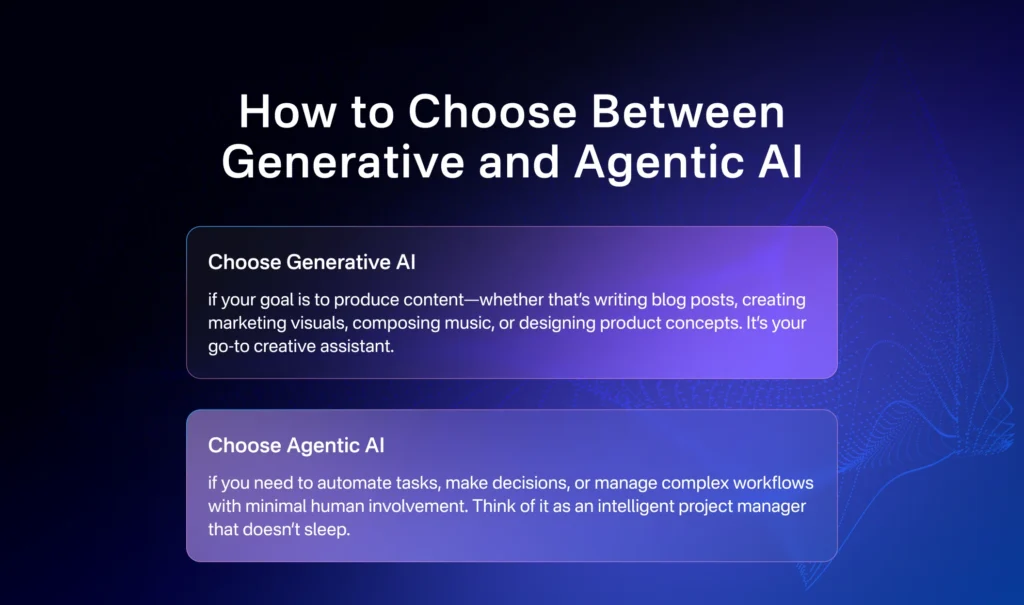
Choosing the right type of AI depends on what you need it to do:
- Choose Generative AI if your goal is to produce content, whether that’s writing blog posts, creating marketing visuals, composing music, or designing product concepts. It’s your go-to creative assistant.
- Choose Agentic AI if you need to automate tasks, make decisions, or manage complex workflows with minimal human involvement. Think of it as an intelligent project manager that doesn’t sleep.
Sometimes, the most powerful approach is to use both, letting generative AI create, and agentic AI coordinate and execute.
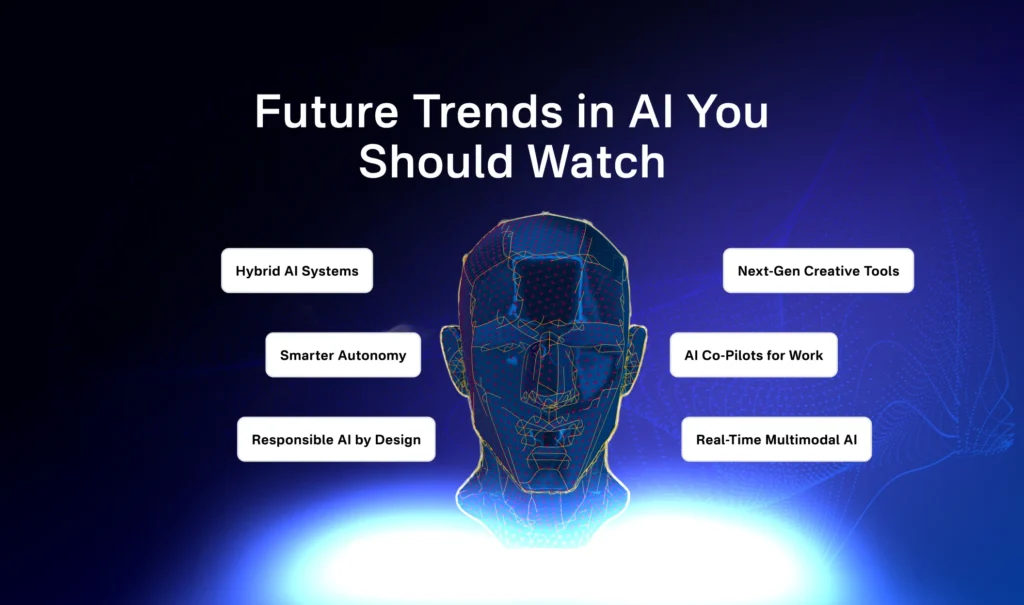
The AI space is moving fast and the lines between generative and agentic capabilities are starting to blur. Here are a few trends shaping the future:
- Hybrid AI Systems
We’ll see more tools that blend the creativity of Generative AI with the decision-making of Agentic AI. These systems won’t just write reports; they’ll plan, research, create, and deliver them autonomously. - Smarter Autonomy
Agentic AI will become better at operating in messy, unpredictable environments. It’ll need fewer examples to learn from, adapt faster to new information, and work more naturally alongside humans and other AI agents. - Responsible AI by Design
As AI gets more powerful, ethics will take center stage. Transparent decision-making, fair data practices, and accountability will be key, especially for agentic systems making high-stakes choices. - Industry-Specific Agentic Solutions
Expect to see more AI agents designed specifically for sectors like healthcare, manufacturing, retail, and finance, each tailored to handle domain-specific tasks with minimal supervision. - Next-Gen Creative Tools
Generative AI will continue to evolve, offering better context understanding, richer personalization, and real-time collaboration tools that make content creation even more seamless. - AI Co-Pilots for Work
In the near future, professionals will rely on AI “co-pilots” to manage meetings, summarize research, suggest improvements, and even handle repetitive tasks, combining the best of generative and agentic functionality. - Real-Time Multimodal AI
Future systems will understand and generate across multiple formats—text, speech, images, video—and reason about them all at once. That means richer, more human-like interactions and more intelligent outputs.
Conclusion
The world of AI is no longer science fiction. It’s here, and it’s reshaping how we create, decide, and act. Generative AI brings creativity to your fingertips. Agentic AI brings autonomy to your workflows.
Understanding the difference isn’t just technical; it’s strategic. Whether you’re running a business, building a product, or streamlining internal operations, knowing what kind of AI to use and why, is key to unlocking its full potential.
And as the technology evolves, these two AI types won’t just coexist, they’ll complement each other in powerful new ways, driving innovation, productivity, and smarter decision-making across every industry.
FAQs
Q1: Can Agentic AI generate creative content like Generative AI?
Agentic AI’s primary strength is autonomous action and decision-making, not content creation. While it may generate some outputs, its focus is on executing tasks rather than creative content generation.
Q2: Is Generative AI capable of making decisions independently?
No, Generative AI responds to specific prompts and does not plan or act autonomously. It lacks the ability to manage multi-step tasks without human guidance.
Q3: What industries benefit most from Agentic AI?
Retail, travel, logistics, manufacturing, and customer service are key sectors leveraging Agentic AI for automation and improved efficiency.
Q4: Are there ethical risks with Agentic AI?
Yes, because Agentic AI makes autonomous decisions, it requires ethical safeguards to prevent harmful or biased outcomes. Oversight and validation are essential.
Q5: How does Generative AI learn to create content?
Generative AI is trained on large datasets to recognize patterns and generate new, human-like content based on those patterns. It does not learn from real-time feedback during generation.
This comprehensive overview of Agentic AI vs Generative AI clarifies their distinct roles and potentials, helping you navigate the AI revolution with confidence.

